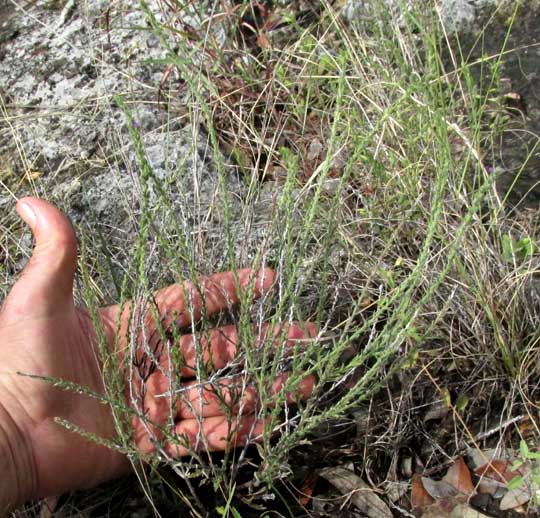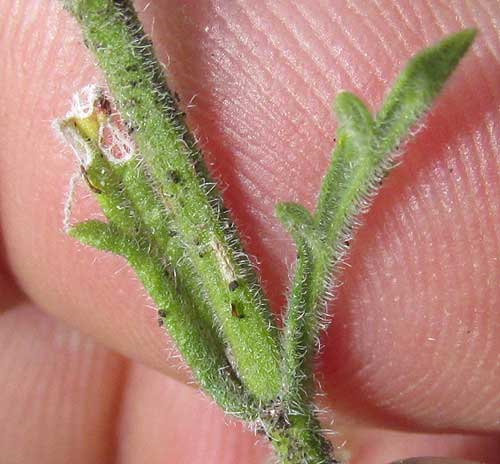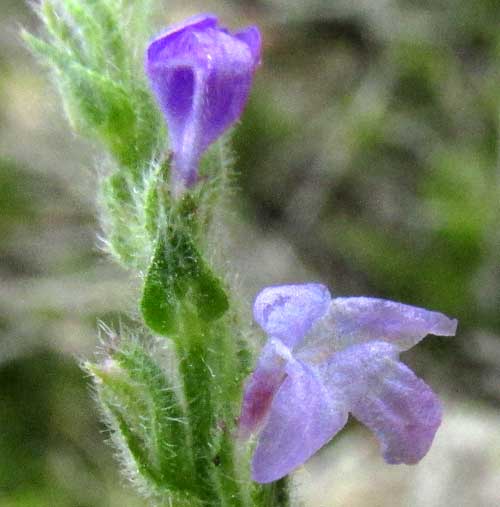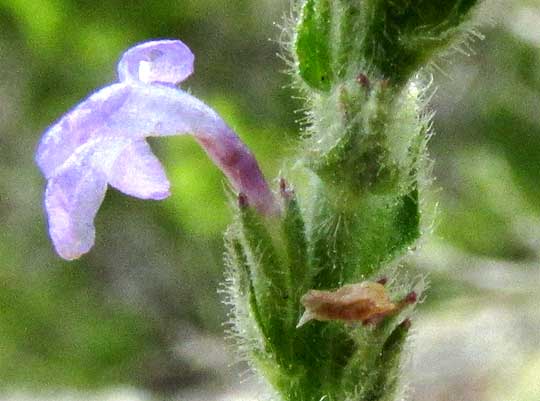Excerpts from Jim Conrad's
Naturalist Newsletter
from the September 14, 2014 Newsletter issued from the Frio Canyon Nature Education Center in the valley of the Dry Frio River in northern Uvalde County, southwestern Texas, on the southern border of the Edwards Plateau; elevation ~1750m (~5750 ft); N29.62°, W99.86°; USA
GRAY VERVAIN
After being in southwestern Texas for nearly two years, finding wildflowers new to me is hard, and usually the new ones I do find are so small and inconspicuous that it's understandable why they were overlooked earlier. That's probably the case with the scrappy little plant almost unnoticeable amidst grass and dry leaves rooted in very thin, dry soil atop limestone shown below:

Most of the slender stems in the picture are actually flowering spikes whose flowers are so small that they don't show in the picture. In fact, the whole plant is smaller than other plants of its species seen on the Internet, apparently because of the very thin, dry soil it was growing in. Its undersized leaves are shown below:

In that picture you see two leaves -- the one on the left a bit bug-eaten. Three important field marks to notice are:
the leaves are two per stem node (opposite); the leaves are deeply lobed and the lobes are narrow leaves and stems are very hairy with white, stiff-looking, spreading hairs.
The opposite leaves already greatly narrow down the possibilities of the plant's identification and when you see the tiny flowers you pretty much know what group they belong to. Flowers with their very hairy calyxes, each arising above a conspicuous, leaf-like bract, can be seen below:
 .
.
Besides all the hairs and the bracts, important field marks to note here are the corolla's lavender color and the fact that they're asymmetrical -- the corolla lobes are of different sizes and not equally distributed atop the corolla tube. Below, a side view shows the curved tube's asymmetry better:

When you see herbs like this with opposite leaves and asymmetrical corollas your first thought needs to be of two plant families: the Mint and the Vervain or Verbena Families. Once you're reminded of the Verbena Family you remember that vervains themselves ,genus Verbena, often look just like this, with small, dog-faced, lavender or purplish flowers arranged in long, slender flowering spikes.
And that's what we have, one of about 250 species of the genus Verbena, most species of which occur in the Americas and Europe.
Verbena species can be hard to distinguish, especially because the flowers are so similar. This is one plant group where vegetative features are especially important to note, which is a different situation from most cases.
Our spindly-looking little plant is the Gray Vervain, VERBENA CANESCENS, which can be separated from other species by is extreme hairiness, its especially long, slender flowering spikes, and its leaves bearing such slender lobes. The narrow leaf lobes are more noticeable on larger plants with better developed leaves. The Gray Vervain gets its name from its coating of hairs, which gives the entire plant a grayish cast. When such hairs produce this kind of grayness they are said to be canescent, which explains the species name, canescens.
In the US Gray Vervain is mainly a Texas plant, but it also turns up spottily in California, Nevada, Oklahoma and Alabama. In Mexico it occurs throughout most of the northern and central regions.